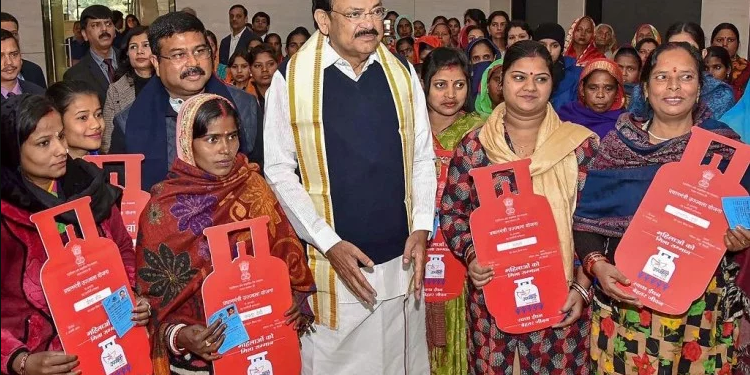India has become the second largest Liquefied Petroleum Gas (LPG) consumer after the Modi government’s push to provide clean cooking fuel to every household through Pradhan Mantri Ujjwala Yojana (PMUY). The Direct Benefit Transfer (DBT) of subsidies has given a push to clean cooking fuel consumption in the country. The demand for LPG is projected to rise by 34 percent by 2025. The compounded annual growth rate (CAGR) of LPG consumer has been 15 percent under the Modi government. The number has grown from 14.8 crores in 2014-15 to 22.4 crore in 2017-18.
“Rapid increase in population combined with LPG penetration in rural areas has resulted in an average growth of 8.4 percent in LPG consumption, making India the second largest consumer of LPG in the world at 22.5 million tonnes. As per (oil) ministry’s projections and forecasts, LPG consumption is expected to grow to 30.3 million tonnes by 2025 and 40.6 million tonnes by 2040,” said Oil Secretary M M Kutty. “Before March 31, 2020, we will provide LPG connections to 8 crore households under PMUY,” he added. The number of LPG connections and consumption of clean cooking fuel has grown exponentially since the launch of Pradhan Mantri Ujjwala Yojana.
The Ministry of Petroleum and Natural Gas has achieved its target of providing Liquefied Petroleum Gas (LPG) connection to 5 crores ‘Below Poverty Line’ (BPL) families before the deadline of 31st March 2019. Lok Sabha Speaker handed over the 5th crore connection in the month of August 2018. Now, the government has decided to extend the scheme to all ration card holding families. After the extension of the scheme, the number of beneficiaries has reached the 6 crore mark. On January 2, 2019, the sixth crore gas connection was handed over to Jasmina Khatoon who hails from Shivpark in Delhi. Now the government has extended the target to 8 crore connections.
Under this programme, 6 crore LPG connections were to be provided to BPL families with the financial support of Rs. 1600 per connection for the next 3 years. With the clear intent of empowering women, the connections were to be issued in the name of women of the households. A budget of 8000 crores was earmarked for this project. In this year’s budget, Finance Minister Arun Jaitley announced 4,800 crores for the scheme to target almost 8 crore households, a target expected to be achieved by 2020.
The scheme was launched to provide clean energy to marginalized people of India who used firewood, dung cakes, coal, or kerosene for cooking. According to WHO estimates, about 5 lakh deaths in India occurred due to unclean cooking fuels. Indoor air pollution is also responsible for a significant number of acute respiratory illnesses in young children. According to experts, having an open fire in the kitchen is like burning 400 cigarettes in an hour.
Schemes like Ujjwala Yojana and Awas Yojana (Gramin) and Antyodaya Anna Yojana have contributed to the betterment of the marginalized section of the society. More than 44% of Ujjwala beneficiaries are from SC/ST communities and hence the scheme can be said to be yielding good results by safeguarding the health of women and children in poor households. The state of Uttar Pradesh where the maximum number of families got benefited by the Ujjwala Yojana voted BJP to power with a full majority in 2017 Vidhan Sabha elections. The party hopes for same results in the upcoming Lok Sabha elections through its welfare schemes.































